- Home
- slideshows
- miscellaneous
- The world's biggest Starbucks is a 30,000 square-foot museum to coffee in China - here's what it's like
The world's biggest Starbucks is a 30,000 square-foot museum to coffee in China - here's what it's like
The Starbucks is located on Nanjing Road, Shanghai's version of New York City's Fifth Avenue or Avenue des Champs-Élysées in Paris. The area is dominated by high-end luxury stores and shopping malls.

I arrived at the Starbucks early in the morning. Any time past mid-morning and I risked waiting in a line that stretches for blocks. Since opening in December, the Starbucks — the largest in the world and the company's second Reserve Roastery — has become a major tourist attraction for Shanghainese locals and visiting Chinese.

I had seen the lines on my previous two days in Shanghai. Even when I arrived in the morning, the cafe was bustling. There were few seats available and a sense of chaos as I struggled to figure out where to order. It felt like being at the hottest bar in town on a Friday night.
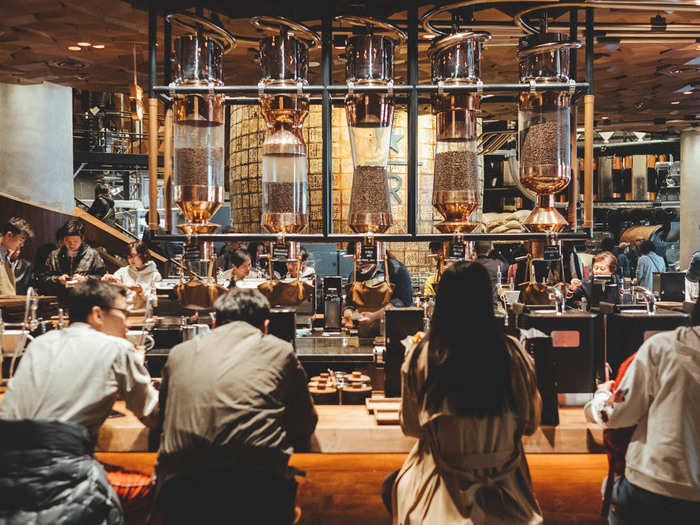
The location is like a Willy Wonka factory for coffee. Many of the processes, like roasting and packaging the beans, happen right in front of the customers' eyes.
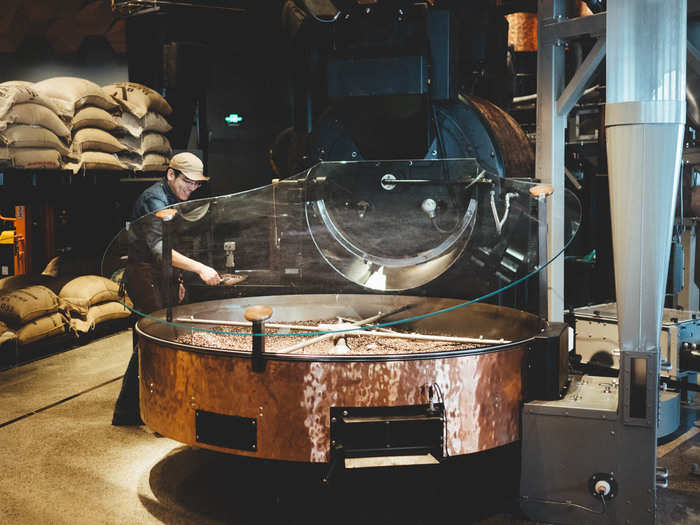
Starbucks partnered with Alibaba, China's e-commerce giant, to build an in-store "augmented reality" experience for the store. If, like most Chinese, you have Alibaba's ubiquitous Taobao app, a specialized page will open when you enter the store. One of the main features is a visual explanation of the roasting process.
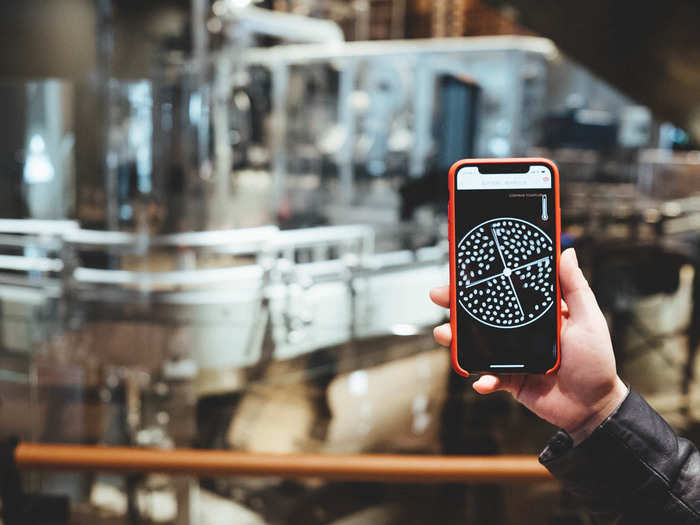
Or, you can just walk around the store. Beans get carried along tubes that line the ceilings. Raw beans are carried to the roasters while finished beans head to the coffee bars.
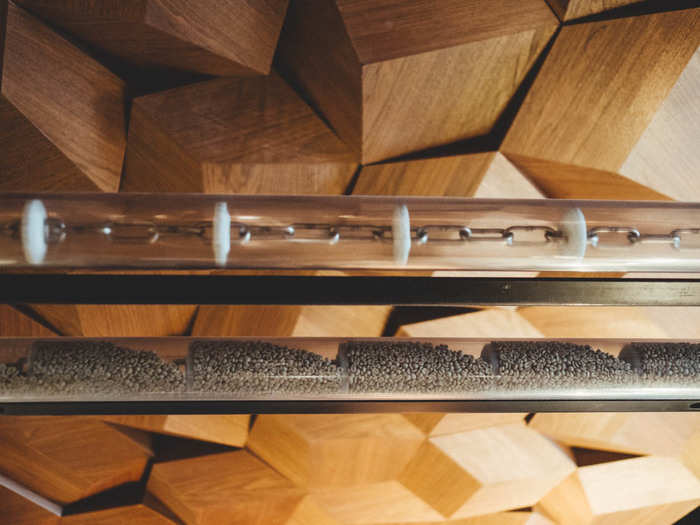
The centerpiece of the cafe is a two-story 40-ton bronze cask. The beans deposit there after roasting.
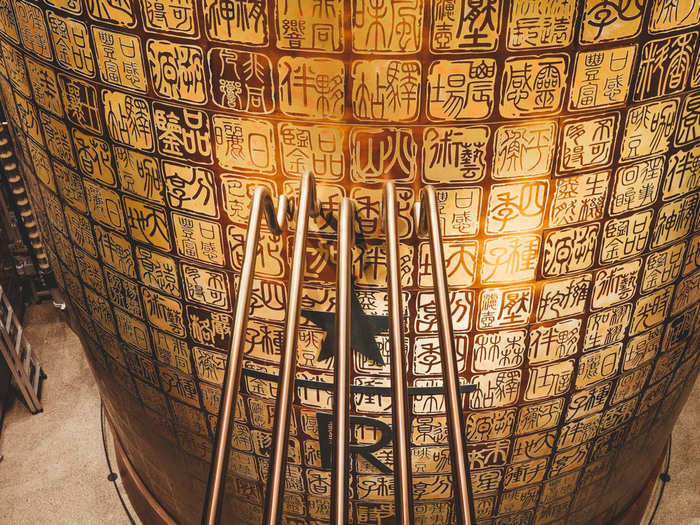
The coffee beans currently roasting are displayed on a large retro board behind the roasting cask. It displays information about taste and origin. Many of the beans are grown in the southwestern province of Yunnan exclusively for the cafe. The region, long known for its tea production, is increasingly growing coffee.
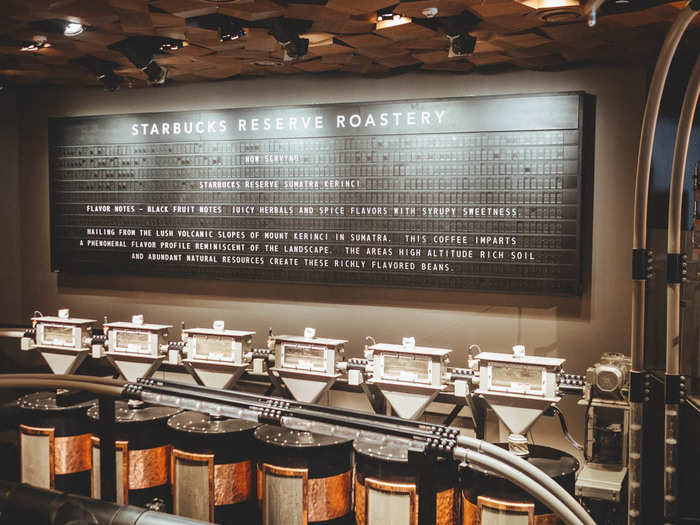
Source: Time
At various times during the day, the factory springs to life and beans are packaged into bags and sent along conveyor belts in the middle of the store. I wanted to be cynical about this, but it's actually pretty cool.
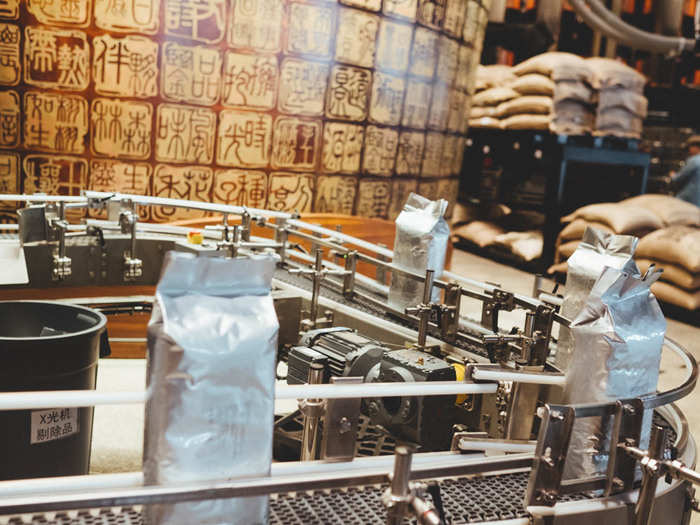
The buzzword around the cafe is that the Roastery is supposed to be "coffee as theater." It certainly feels like it. I saw visitors waiting in front of different machines for them to activate.
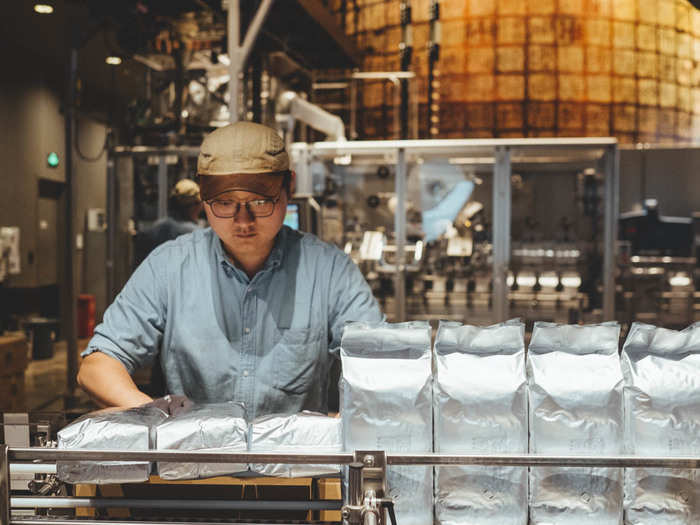
The cask is adorned with 1,000 traditional Chinese stamps that have been "hand-engraved," according to Starbucks, and tell the story of the company and coffee. I couldn't read them, but they make for a striking Instagram photo.

When the beans are finished they get pumped into one of the cafe's three coffee bars. The longest bar is 88 feet long and handmade, making it the longest Starbucks coffee bar in the world.
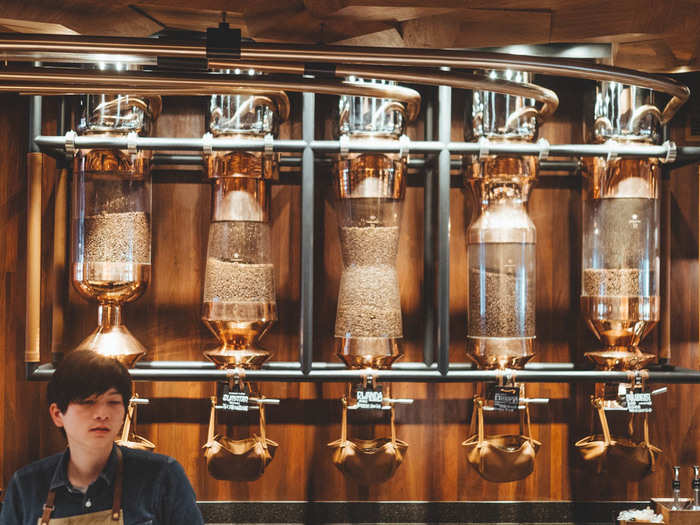
The Starbucks is essentially three restaurants in one — the cafe, a tea bar, and Italian bakery chain Princi, which the chain partnered with in 2016. While there's plenty of croissants and muffins, there's also heartier fare like focaccia and pizza.
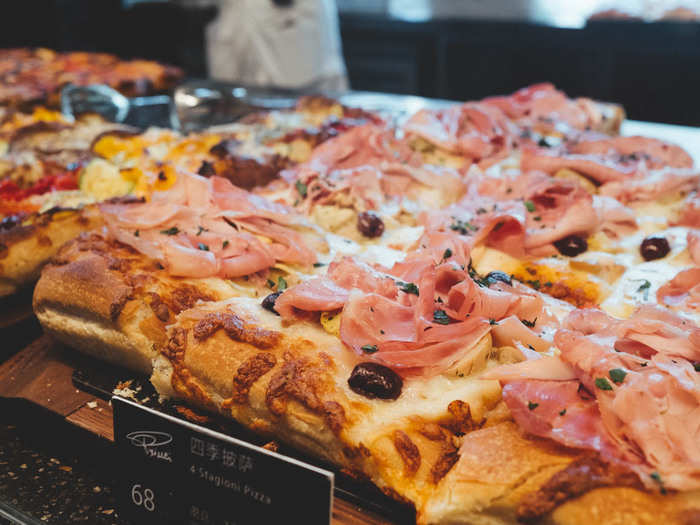
I opted for a Parma ham and cheese focaccia and a cappuccino (my usual). The focaccia was fresh, warm, and with a little crunch. No soggy cafe pizzas here.
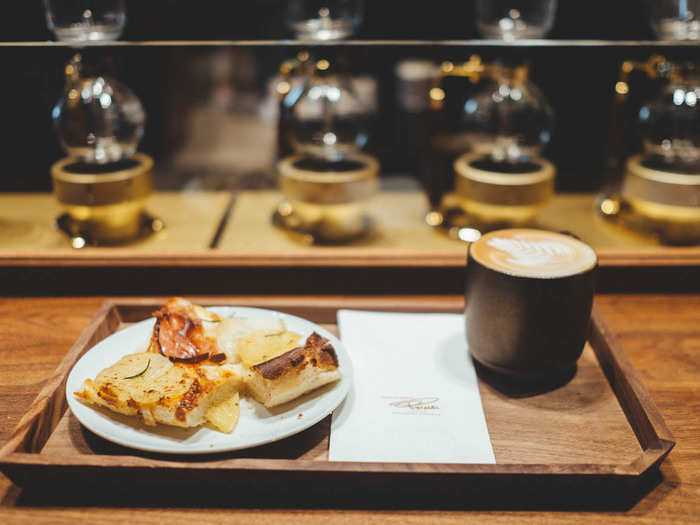
While I opted for a pretty standard Italian-style cappuccino, the cafe can make coffee with just about every brewing method you can imagine.
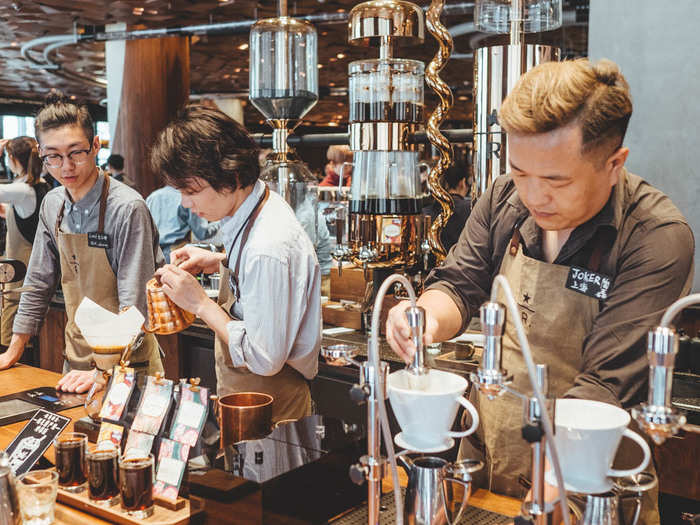
I sat in front of a barista using a siphon or vacuum coffee maker, a method which dates to the 1800s. It uses water pressure, from heat or cooling, to push water from the lower chamber to the upper chamber for brewing.
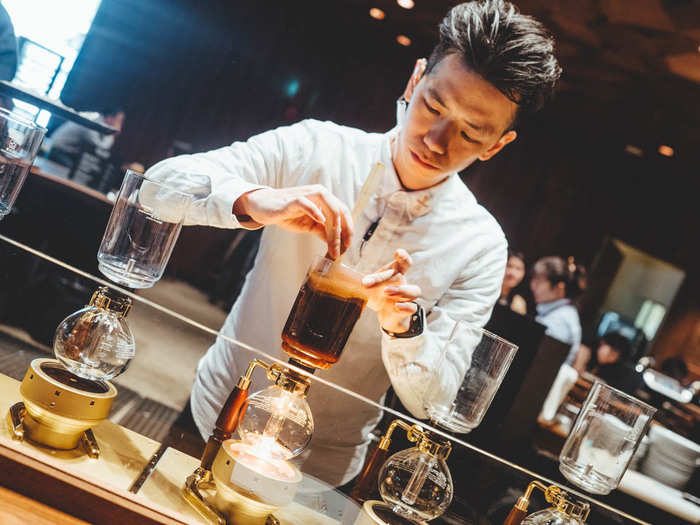
My companion had never heard of the brewing method so she used the Starbucks-Taobao app to scan the machine, which then provides information about the device. All you have to do is hold your camera up to a device and it recognizes it. In theory, at least. The feature had some trouble properly recognizing what we pointed it at.
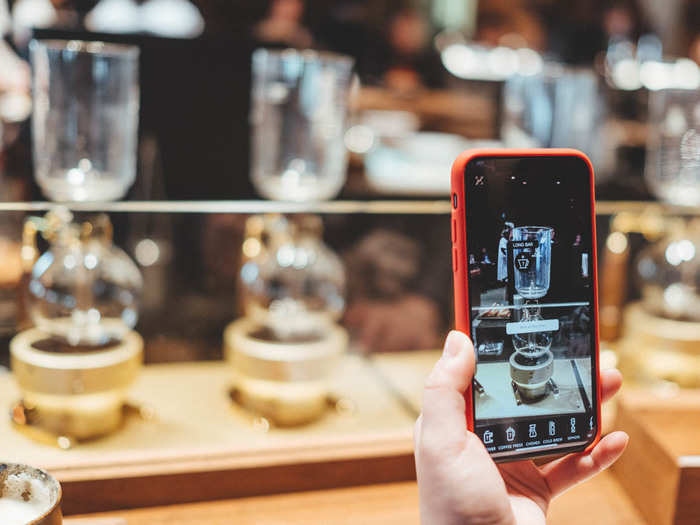
Customers get virtual badges in the app by scanning items in a kind of online-offline scavenger hunt. It feels more like a proof-of-concept than a must-use feature, but one could see how it could be used to distribute promotions or simplify ordering.
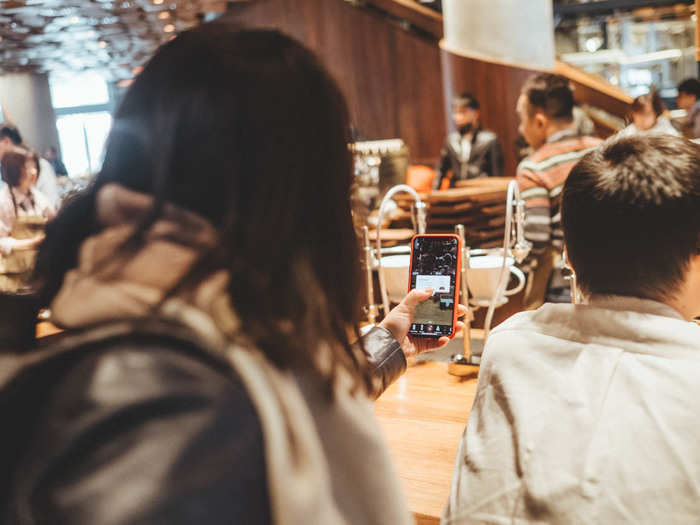
The app will also provide the menu for whatever coffee bar you are currently sitting at. However, you have to order with a real barista, which seemed strange given how mobile-first China is as a country and how many Starbucks already use online ordering.
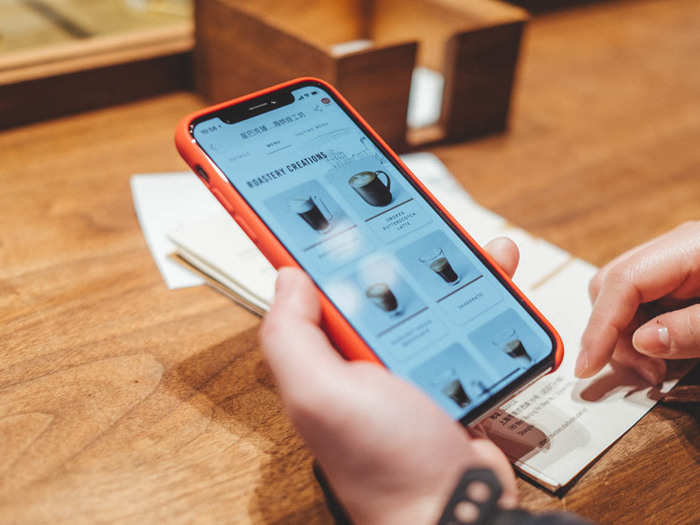
China is known more for its tea culture, but it is quickly growing a coffee culture — particularly in its cities and among its growing middle class. With 3,000 branches in China and counting, Starbucks is betting on it continuing to grow. Last year, the Asia-Pacific counted for 15.5% of the company's revenue up from 5.5% in 2012.

Source: Financial Times
Starbucks Reserve Roastery Shanghai feels like an amusement park for coffee. There's a gift shop area that takes up maybe a quarter of the open floor on the first floor, selling beans, various coffee devices, and merchandise.
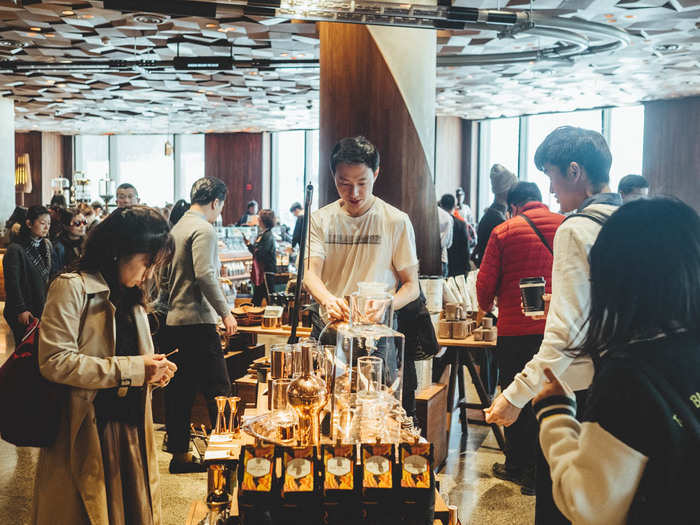
Of course, there are cups and mugs custom-made for the Shanghai Roastery. Most items can be purchased on the Starbucks-Taobao app as well.
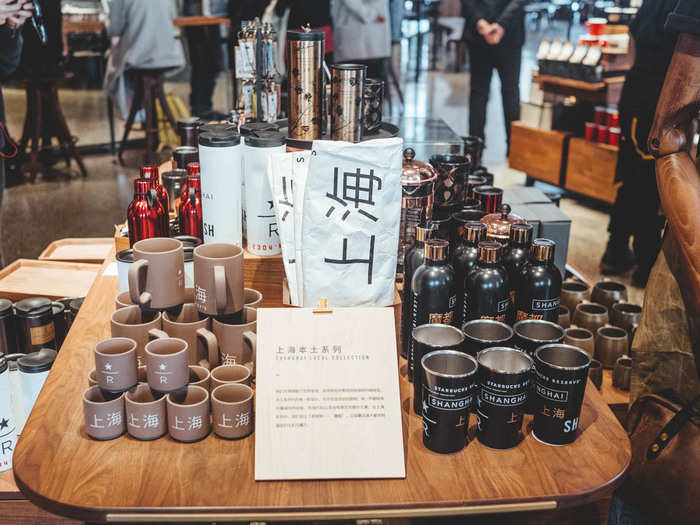
In addition to the prepackaged beans, you can get custom bags of beans freshly roasted in the store.
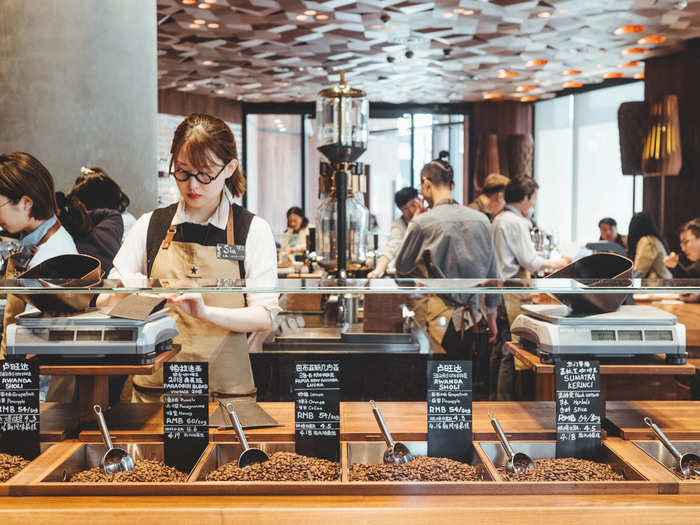
You can sample different coffee beans at "discovery" areas around the store.
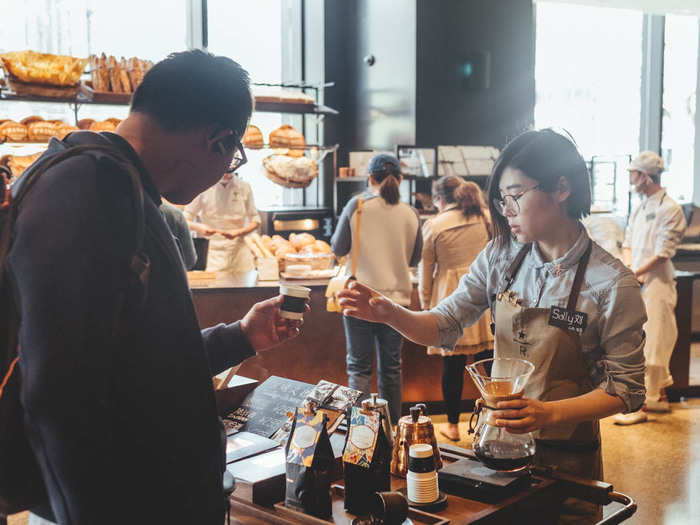
There's a tasting area for wines and beers sold at the cafe as well.
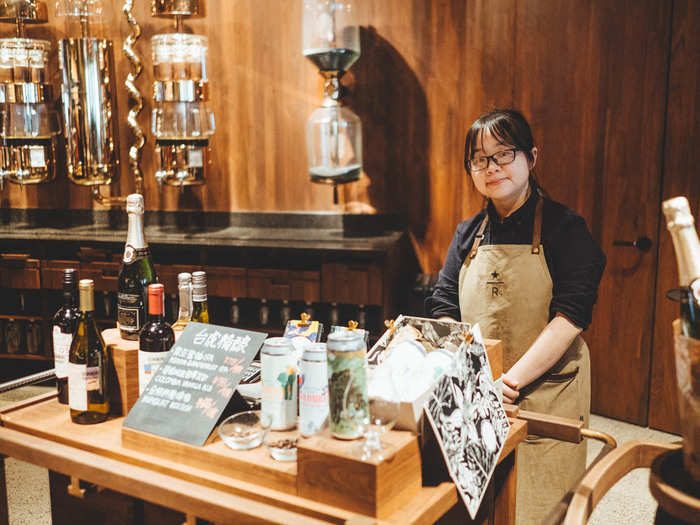
There are also Belgian chocolates from chocolatier Neuhaus.
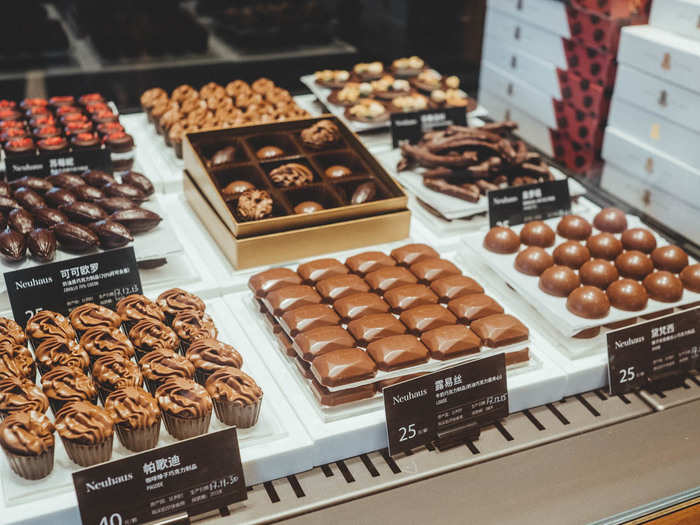
It's easy to get lost in the cafe. I spent nearly an hour wandering around the first floor before heading upstairs.
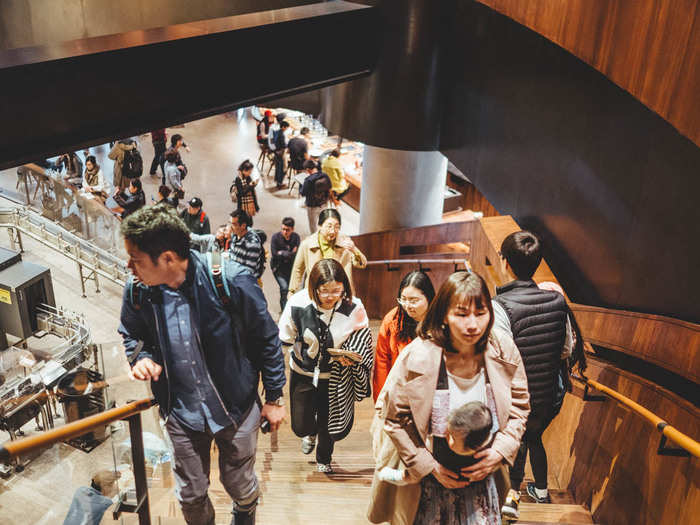
The upstairs has seating along a balcony so you can watch the commotion in the "factory" below.
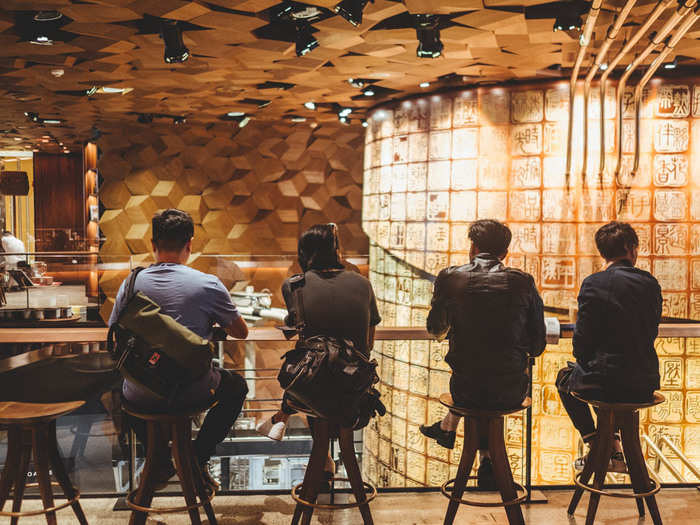
There's a "coffee library" full of books on the history of coffee, different brew methods, Starbucks history, and "coffee art." Because coffee is relatively new to China, Starbucks is hoping that the location can educate coffee newbies as well as please the bean-heads.
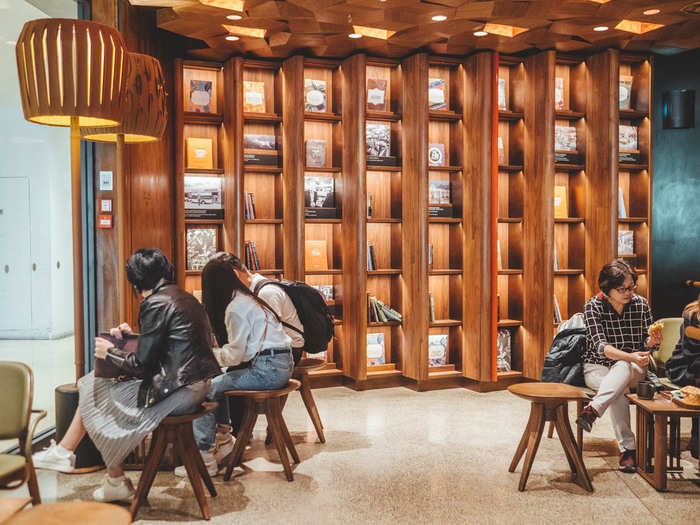
But tea is still king in China. There's a Teavana tea bar built using a 3-D printer and designed to pay homage to the country's thousands-year-old tea culture.
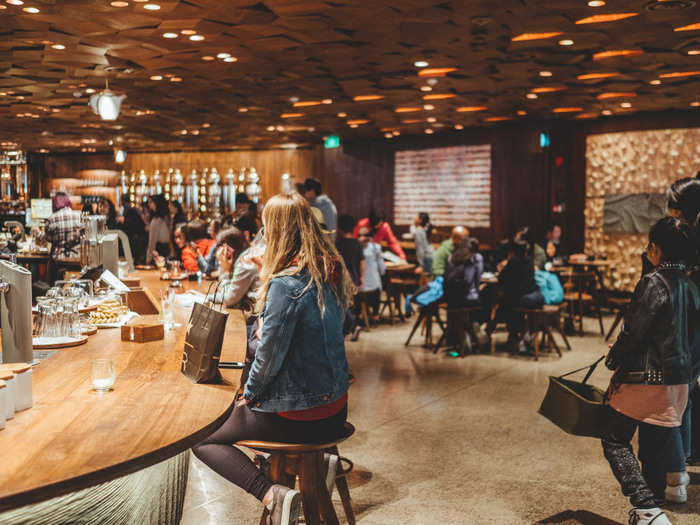
There are a lot of tea options to choose from, as well as a variety of brewing methods.
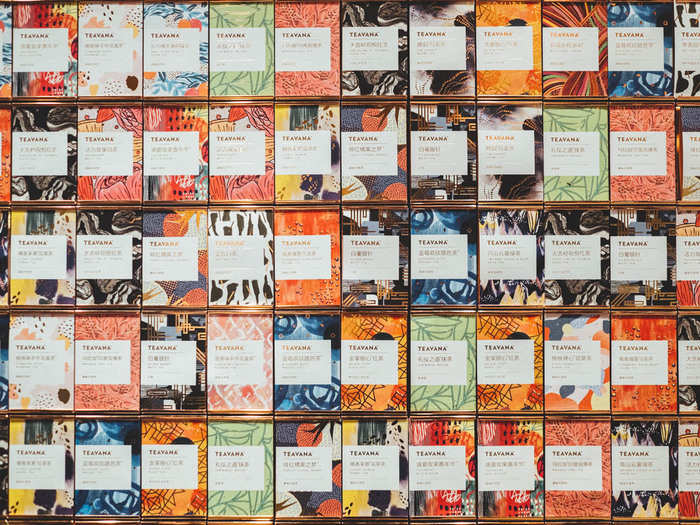
Chinese consumers are notoriously picky about the quality of their teas. Visitors can see many of the tea leaves displayed on the bar for them to inspect.

In addition to the variety of teas, there are also more complicated tea-based drinks on the menu, including teas made with nitrogen, which adds a creamy texture without dairy.
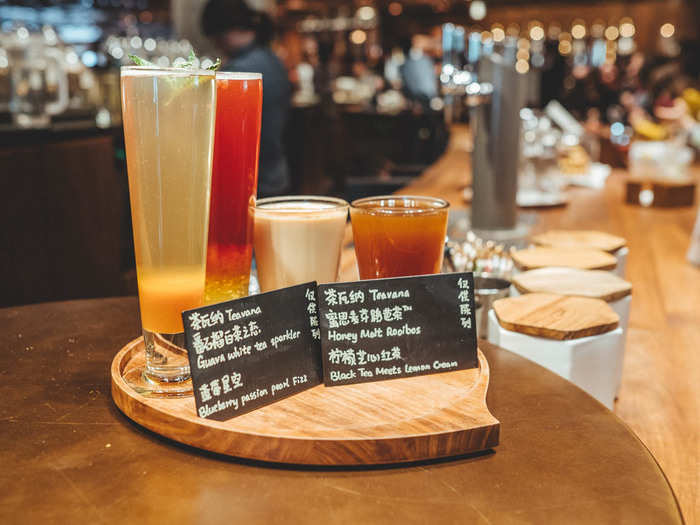
Source: LA Times
The Starbucks-Taobao app knows where you are in the store. When we sat at the Teavana bar, the tea menu popped up.
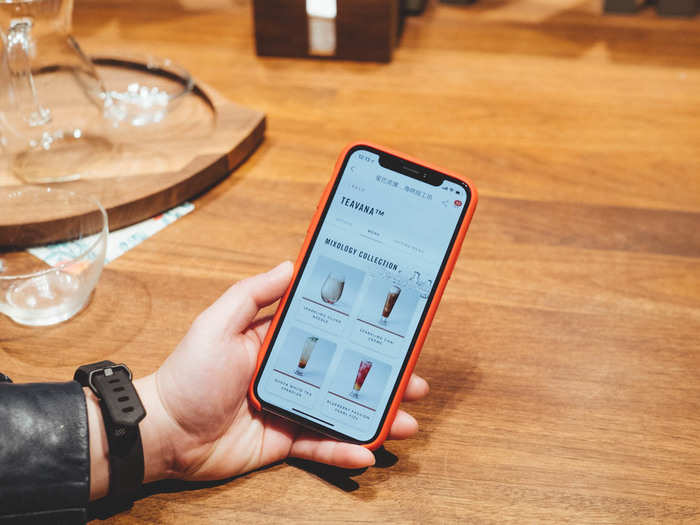
The buzziest brew method in the cafe is the "steampunk," which Starbucks says "uses steam to extract unique flavors from each tea leaf."
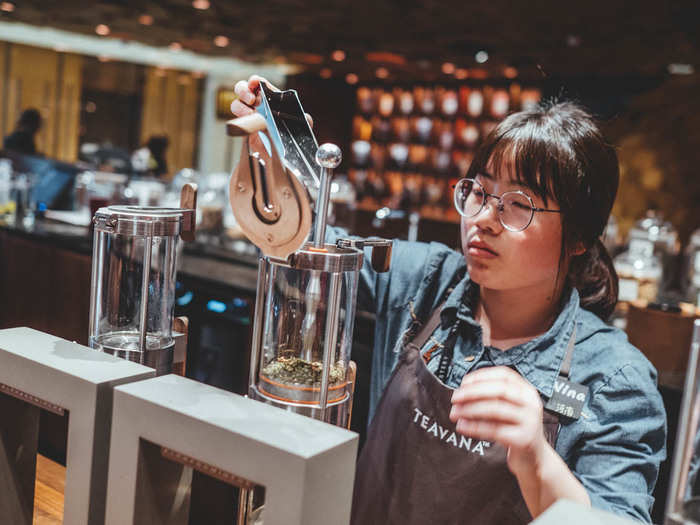
Not all teas are available for the "steampunk" method. I opted for the green tea. The barista brought out a sample of the leaves for me to inspect before brewing, not unlike a sommelier bringing out wine at a restaurant.
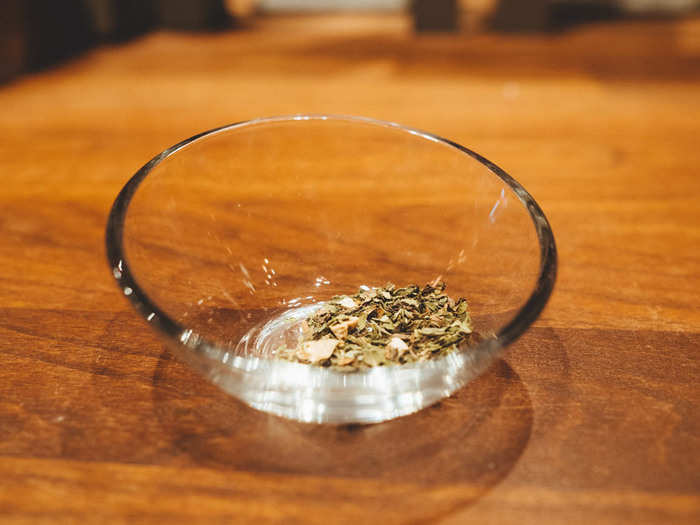
The "steampunk" is fun to watch go to work. The leaves churn and spin as the water rises from below. It reminded me of the siphon brewing method for coffee.
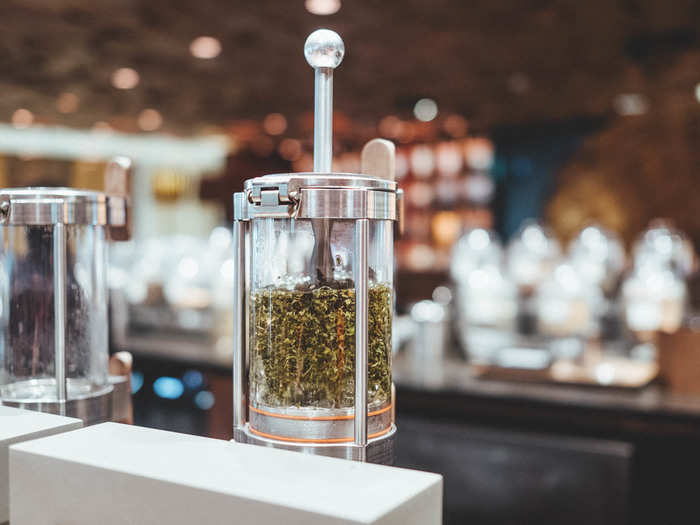
Once it's ready, the tea drains back into the bottom container before being dispensed into a jug for pouring.
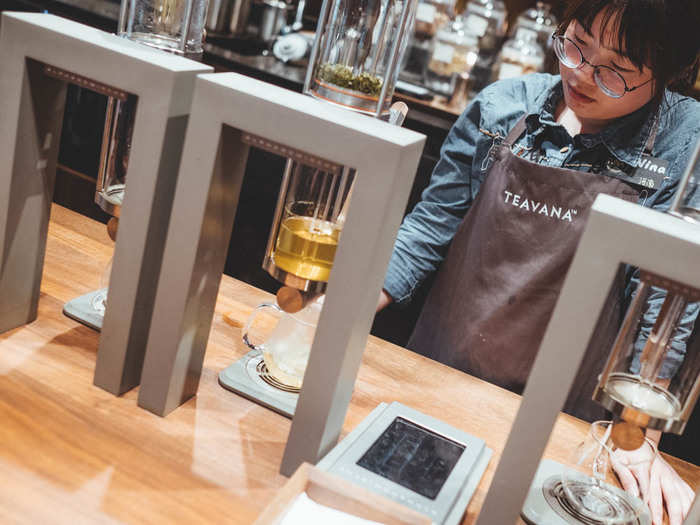
It's a snazzy presentation, with enough tea for two people to have a couple of cups.
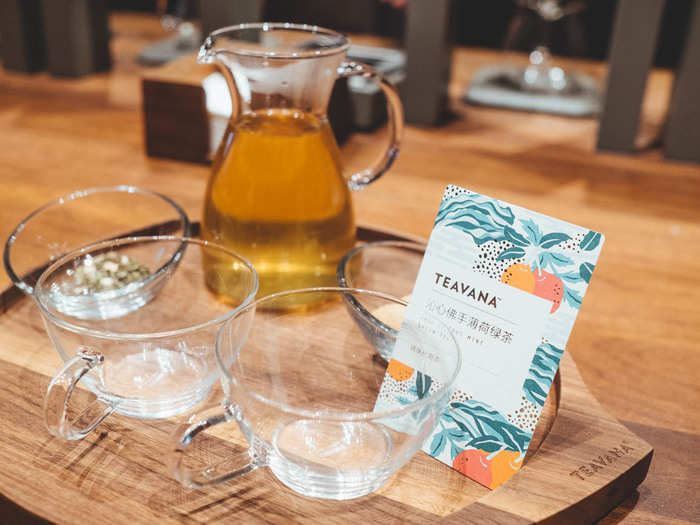
The line outside had started to build up when I left. The Roastery Reserve looks like a big hit in Shanghai. Starbucks is hoping it can replicate that success across the world, with plans to open as many as 30 Roasteries. Locations in Milan and New York are slated to open in 2018, and Tokyo and Chicago in 2019.

Popular Right Now
Popular Keywords
Advertisement